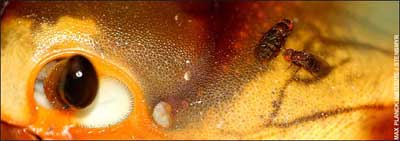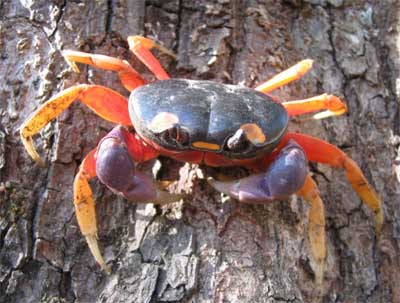Endangered fly rediscovered on unusual ‘crabitat’
- Complaining about the Mainland - 17th August, 2024
- New island designation – is it just greenwash? - 26th April, 2024
- Police and Crime Commissioners – a solution or a problem? - 21st April, 2024
In 1966, 21 specimens of a new type of fly were collected from an unusual habitat in the Caribbean by a fly expert called H.L. Carson, who was intrigued to find three separate species of fly all living solely on (and in) tropical land crabs – two in the Caribbean and one on Christmas Island, half a planet away. He speculated that the flies’ use of the strange ‘crabitats’ had evolved separately in all three cases. Since that time, nothing more has been seen of these curious creatures – until now.

In 2007 another study was undertaken by Marcus C. Stensmyr of the Max Planck Institute for Chemical Ecology, Jena, Germany. Stensmyr and colleagues wanted to find out more about Carson’s flies and their odd way of life. With what can only be scientific understatement Stensmyr writes:
The flies strike a peculiar sight in real life. They essentially hardly move at all, are extremely reluctant in leaving their host crabs and are hard pushed to take flight. Although the flies are sluggish, the crabs on which they reside are anything but. Chasing after crabs through a pitch-black jungle (growing on a razor sharp labyrinthine limestone ground), while trying to aspirate flies from their carapaces is not trivial. Obtaining large amounts of flies in this way is simply a nightmare. The scarcity of the flies, and the nocturnal and shy nature of their hosts made it a daunting task to figure out the biology of these odd flies… All in all, we managed to collect 66 fly specimens.
So Drosophila endobranchia adults court, mate, lay their eggs and presumably die on the backs of land crabs. The larvae hatch from eggs laid around the eyes, and make their way to the nephric pads – an area of the land crab where urine is produced and home for many bacteria – which the larvae eat, before migrating back to live in the gill chambers of the crab, then finally back out to the mouth-parts before falling off onto the ground to pupate. When the adult emerges from the puparium, it finds itself a crab host. Stensmyr and colleagues used their hard-won captive flies to see if they could discover how they did this – and given the difficulty in dealing with both the fly and its host, were left only able to speculate that it might be something to do with carbon dioxide concentrations. An extraordinary life-cycle. Stensmyr does not speculate on whether the crabs are adversely affected by the flies, although he uses the words ‘infested’ and ‘infection’, which suggests that it might not be an entirely benign co-existence.

There’s plenty of scope to find out more about this remarkable partnership – and particularly to discover why it seemingly evolved independently in more than one location. However, time may be running out. Stensmyr writes:
…we initially examined the sites where the original specimens were collected [in 1966]. Unfortunately, these sites now housed either hotels or condos and consequently, neither crabs nor flies were located… Habitat destruction and hunting pose a clear threat to the long term survival of the black crabs on Grand Cayman, and accordingly also to their fly guests. The decline is evident by comparing the results from Carson’s fieldwork with ours. The beach habitats where Carson evidently found large numbers of crabs are today practically void of any crab life. Nowadays, black crabs are confined to isolated forest patches, which in most (if not all) cases lack any form of protection, as e.g. site 1, which at the time of writing is being largely cleared for development.
A worrying footnote to this intriguing tale. However, to avoid ending on a dismal note, enjoy this video of Drosphila Sumo Wrestling:
